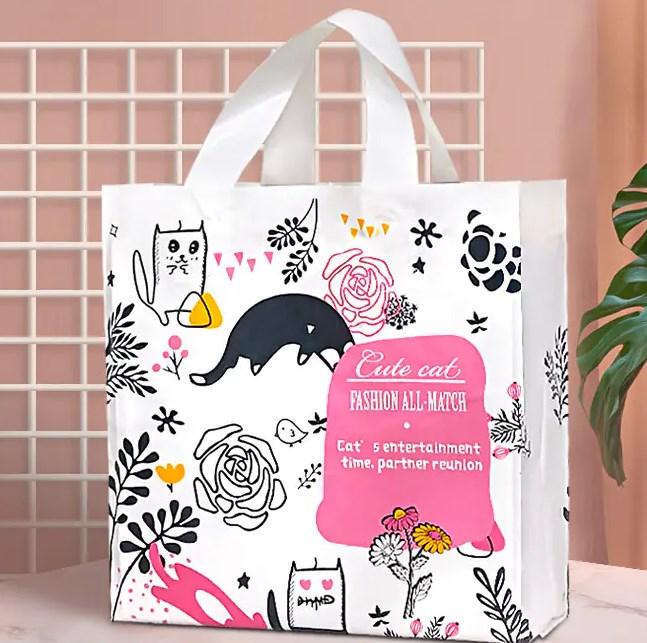In the retail world, carrier bags are more than just a means to transport goods; they are a canvas for brand expression and a tangible representation of a company's identity. The printing process of retail carrier bags is a meticulous art that combines creativity with technical precision. This article delves into the various printing techniques used to create these essential retail accessories, ensuring that each bag is not only functional but also a visual delight.
The journey of a retail carrier bag begins with the selection of material. Common materials include paper, plastic, and fabric, each with its own set of printing challenges and opportunities. Once the material is chosen, the design process commences. Designers must consider the bag's purpose, the brand's aesthetic, and the message they wish to convey. This design is then translated into a format suitable for the chosen printing method.
Screen printing is a popular method for retail carrier bags, especially for designs with a limited color palette. This technique involves the use of a mesh screen with a stencil of the design. Ink is pushed through the screen onto the bag, creating a sharp and durable image. Screen printing is ideal for large orders, as it is cost-effective and efficient once the screens are prepared.
Offset printing, on the other hand, is a technique that allows for more complex designs and a broader color range. It works by transferring the ink from a plate to a rubber blanket and then onto the bag. This method is well-suited for photographic images and intricate details, making it a favorite for high-quality, full-color designs.
Digital printing has revolutionized the industry by offering a more flexible and cost-effective solution for short runs and personalized designs. Using advanced technology, digital printers apply ink directly onto the bag from a digital file, allowing for quick changes and individual customization. This method is particularly useful for small businesses and promotional campaigns.
Another innovative printing technique is flexography, which is commonly used for plastic retail carrier bags. This method uses a flexible plate to transfer the ink, allowing for a wide range of colors and designs. Flexography is known for its ability to produce vibrant, long-lasting prints that can withstand the rigors of daily use.
Embossing and debossing are additional processes that can enhance the tactile quality of retail carrier bags. These techniques involve creating a raised or recessed design on the bag's surface, adding a luxurious feel and a distinctive look. They are often used in combination with printing to create a multi-sensory brand experience.
Lamination is another crucial step in the production of retail carrier bags, especially for those made from paper or cardboard. This process involves applying a thin layer of material, such as plastic or foil, to the bag's surface, providing additional strength, durability, and a waterproof finish.
The choice of ink also plays a significant role in the final appearance of retail carrier bags. Water-based inks are eco-friendly and suitable for food packaging, while solvent-based inks offer greater durability and resistance to fading. UV-curable inks are another option, providing a quick-drying and highly scratch-resistant finish.
In conclusion, the printing process of retail carrier bags is a complex and fascinating blend of art and science. From the initial design to the final product, each step is carefully considered to ensure that the bags are not only durable and functional but also a beautiful extension of the brand. As the retail landscape continues to evolve, so too will the printing techniques that bring these essential bags to life, ensuring that they remain a vital and stylish component of the shopping experience.
